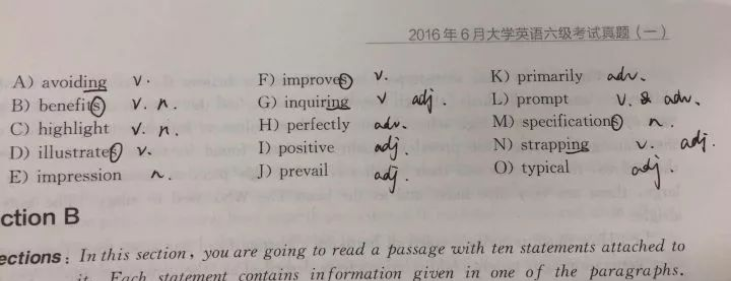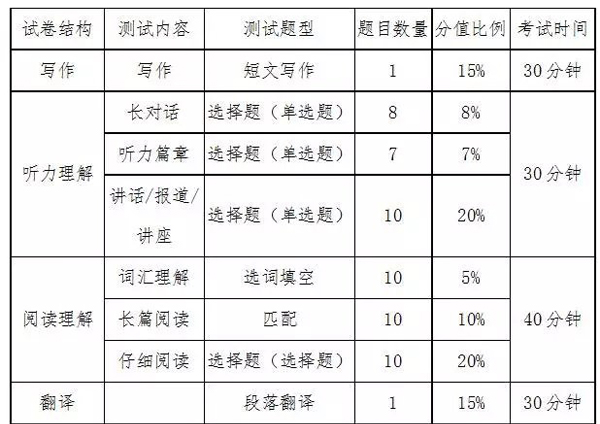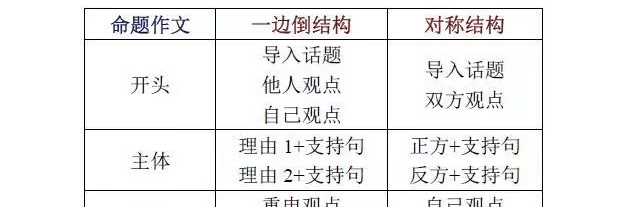2008年文登学校春季词汇班精彩文篇推荐(八)
|
第八篇 Hot Times All Around (1) If good intentions and good ideas were all it took to save the deteriorating atmosphere, the planet’s fragile layer of air would be as good as fixed. The two great dangers threatening the blanket of gases that nurtures and protects life on earth — global warming and the thinning ozone layer — have been identified. Better yet, scientists and policymakers have come up with effective though expensive countermeasures. (2) But that doesn’t mean these problems are anywhere close to being solved. The stratospheric? ozone layer, for example, is still getting thinner, despite the 1987 international agreement known as the Montreal Protocol?, which calls for a phaseout of chlorofluorocarbons (CFCs)? and other ozone-depleting? chemicals by the year 2006. (3) CFCs — first fingered as dangerous in the 1970s by Sherwood Rowland and Mario Molina, two of this year’s Nobel-prizewinning chemists — have been widely used for refrigeration and other purposes. If uncon-trolled, the CFC assault on the ozone layer could increase the amount of hazardous solar ultraviolet light that reaches the earth’s surface, which would, among other things, damage crops and cause cancer in humans. Thanks to a sense of urgency triggered by the 1985 detection of what has turned out to be an annual “hole” in the especially vulnerable ozone over Antarctica, the Montreal ______ have spurred industry to replace CFCs with safer substances. (4) Yet the CFCs already in the air are still doing their dirty work. The Antarctic ozone hole is more severe this year than ever before, and ozone levels over temperate? regions are dipping as well. If the CFC phaseout proceeds on schedule, the atmosphere should start repairing itself by the year 2000, say scientists. Nonetheless, observes British Antarctic Survey meteorologist Jonathan Shanklin: “It will be the middle of the next century before things are back to where they were in the 1970s.” Even that timetable could be thrown off by interna-tional smugglers who have been bringing illegal CFCs into industrial countries to use in repairing or recharging old appliances. Last year alone 20000 tons of contraband? CFCs entered the U.S. — mostly from India, where the compounds are less restricted. (5) Developing countries were given more time to comply with the Montreal Protocol and were promised that they would receive $250 million from richer nations to pay for the CFC phaseout. At the moment, though, only 60% of those funds has been forthcoming. Says Nelson Sabogal of the U.N. Environment Program: “If devel-oped countries don’t come up with the money, the ozone layer will not recover. This is a critical time.” (6) It is also a critical time for warding off? potentially catastrophic climate change. Waste gases such as car-bon dioxide, methane? and the same CFCs that wreck the ozone layer all tend to trap sunlight and warm the earth. The predicted results: an eventual melting of polar ice caps, rises in sealevels and shifts in climate pat-terns. (7) Delegates to the 1992 Earth Summit in Rio passed a resolution urging industrial countries to reduce emis-sions of “greenhouse gases” to 1990 levels, mostly by increasing energy efficiency, but the agreement was purely voluntary — and exempted developing nations. The industrial countries were also asked to help devel-oping nations switch to less polluting technology in a program known as “joint implementation.” Unfortunately, that would take money, and industrial nations are not in a spending mood these days. A few pilot projects have gone forward. Three U.S. utilities are building a gas-fired power plant in the Czech Republic to replace a coal-burning plant, and Japan is exploring similar ventures in China. For the most part, though, getting developed countries to sponsor such programs has proved difficult. Inside the industrial world, emission-reduction efforts have been most successful in ecology-minded Germany and Japan. But in the U.S., the world’s biggest green-house polluter, legislators want to cut taxes rather than boost spending. (8) Until recently, slackening governments could point to scientific uncertainty about whether global warming has started, but that excuse is wearing thin. A draft report circulating on the Internet has proclaimed for the first time that warming has indeed begun. Global average temperatures have risen about 1℃ in the past century, and human activity is almost certainly part of the cause. “It’s as clear a record as we can possibly get of a warming trend,” says Tom Wigley, a senior scientist with the U. S. National Center for Atmospheric Research and a con-tributor to the U. N. -sponsored Intergovernmental Panel on Climate Change (IPCC), which produced the re-port. (9) The draft report says temperatures will probably continue to rise, jumping as much as 5℃ over the next century. That will be the biggest increase since the warming that ended the last Ice Age — but this one will be taking place over decades, not centuries. That means sea levels will rise, flooding coastal areas and river deltas and endangering more than 100 million people. Beyond that, rainfall patterns will undoubtedly change, disrupt-ing agriculture. And weather extremes of all kinds will get more extreme. Hurricanes and typhoons are pre-dicted to become more powerful and destructive; wet areas are likely to get wetter, triggering floods, while hot, dry parts of the world could get even more arid. (10) Because the changes will be rapid, natural ecosystems — wet lands, rain forests, savannas — may be unable to adapt. Animals and plants that have evolved to live under a certain set of climate conditions will sud-denly face different circumstances. Many will go extinct. And the potential for deadly disease outbreaks will rise: warming waters will be more hospitable to germs like those that cause cholera?; disease carriers such as the Aedes aegypti mosquito may find they can survive nicely in places like northern Europe and the U.S., mak-ing illnesses such as malaria? more widespread. (11) The good news is that this gloomy scenario? may galvanize? the world’s governments into taking serious action. The first line of attack, says Florentin Krause, an IPCC contributor and director of the California-based International Project for Sustainable Energy Paths, should be “no regrets” actions — changes that will be beneficial no mater how much of a threat global warming turns out to be. Among them: promoting the use of energy efficient appliances and cars. But the IPCC report, says Krause, makes it clear that nations must do more. For example, though it’s now more costly to generate electricity from solar cells than from gas or coal, using the sun’s clean energy could save money that would otherwise have to be spent in the future combatting the effects of global warming. (12) The encouraging precedent is the Montreal Protocol for ozone protection, which showed how quickly na-tions can act when they finally recognize a disaster. A related lesson is that if CFCs do disappear, it will be partly because chemical manufacturens discover they can make a profit by selling safer replacements. The same process may ultimately be what relieves global warming. After long years of effort, manufacturers of solar-power cells are at last close to matching the low costs of more conventional power technologies. And a few big orders from utilities could drive the price down to competitive levels. If that happens, then all nations, from the rich to the poor, may end up working to save the atmosphere for the same reason they’ve polluted it: pure eco-nomic self-interest. 【参考译文】: 全面加温 (1) 如果光靠良好的用心与正确的观念就能挽救逐步恶化中的大气层,那么地球上这一层脆弱的空气就没问题了。这一层气体,哺育着、庇护着地球上的生命,本身正面临两大威胁,现在已经找出来了:全球温度上升,以及臭氧层损耗。不仅如此,科学家与决策人士还提出了尽管耗费昂贵但是十分有效的防范措施。 (2) 但是大气层的问题要获得解决还早得很。例如,在同温层高处的臭氧层还是日渐稀薄,尽管在1987年国际间曾达成协定(称为《蒙特利尔公约》),呼吁逐步淘汰氟利昂制冷剂与其他破坏臭氧的化学物质,以公元2006年为底线。 (3) 1970年代,罗兰德与莫理纳(他们在今年双双赢得诺贝尔化学奖)首度指出氟利昂制冷剂的危险。这种物质普遍使用于冷冻以及其他用途。如果不加以控制,它会破坏臭氧层,造成阳光中危险的紫外线大量射到地球表面,这会有许多害处,例如农作物受损,也会致癌。1985年发现,在南极洲上空特别脆弱的臭氧层出现破洞(后来证明是年年出现破洞),世人终于感觉到事态紧急,于是达成《蒙特利尔公约》,促使各业以较安全的物质代替氟利昂制冷剂。 (4) 但是空气中现有的氟利昂制冷剂还在继续肆虐。南极洲臭氧层破洞今年更趋严重,而且温带地区上空的臭氧含量也在下降。科学家表示, 如果淘汰氟利昂制冷剂能按照进度达成,到2000年时大气层应能开始自我修复。然而英国南极观测会的气象学家尚克林表示:“要到下世纪中叶才能恢复到1970年的状况。”这个进度恐怕也会出差错,因为国际走私客一直挟带非法的氟利昂制冷剂到工业国家,用以修补或添加在旧式用品中。去年一年就有2万吨违禁的氟利昂制冷剂进入美国——大多来自管制较松的印度。 (5)发展中国家有较长的期限来达到《蒙特利尔公约》的要求,而且获得承诺,可以得到富有国家提供的2.5 亿美元经费以逐步淘汰氟利昂制冷剂。可是目前这笔经费只有60%正在支付中。联合国环境规划署的萨布果表示:“如果先进国家的支票不能兑现,臭氧层就不能恢复。这是关键时刻。” (6)要想阻挡气候形态转变可能带来的灾难,现在也是关键时刻。各种废气,像二氧化碳、甲烷以及破坏臭氧层的氟利昂制冷剂,都可能捕捉阳光,提高地球上的温度。预期的结果:南北极冰帽终将溶化,海平面上升、气候形态转变。 (7) 1992年里约热内卢地球高级会议的与会代表通过决议,呼吁工业发达国家将“温室气体”的排放量降低到1990年的水平,主要靠提高能源效率来达成,可是这项决议纯属自愿性质——而且发展中国家也不包括在内。同时还敦促工业国家参与“联合施行”计划,帮助发展中国家转移到低污染的技术状态。可是这样做要化钱,而工业发达国家目前并没有兴致要花钱。有几项先导计划是已经展开了。美国有3家公用事业公司正在捷克共和国兴建天然气发电厂以取代燃煤发电厂,日本也在中国研究作类似的投资。但是一般说来,要叫先进国家同资来做这种计划并不容易。在工业发达国家之林,有生态意识的德国与日本对于减低废气排放做得最有成效。可是,在美国这个世界第一的温室气体污染国,议员一心想减税,不想增加支出。 (8)不久以前,没有积极配合的国家还有一个借口:科学界还不确定全球温度上升是否已经开始了。这个借口现在快站不住脚了。国际互联网上流传的一份报告草案首度宣称温度确已上升。全球平均温度100年来上升了1℃左右,几乎可以肯定部分原因是人类活动造成的。汤姆·维格莱说:“温度上升的趋向,这是最明确的记录。”他是美国国家大气研究中心的资深科学家,也是联合国主办的气象变化跨国会议(IPCC)的成员。这份报告就是IPCC提出的。 (9)报告草案中表明气温可能会持续上升,到下一世纪末可以大幅升高5℃。自从上一次冰河时代结束以来,这算是最大规模的温度上升,而且仅历时几十年,不是几百年。如此一来,海平面会升高,沿岸地区与河口三角洲会淹没,危及1亿以上的居民。此外降雨形态势必会起变化,因而妨碍农业活动。各式各样恶劣的气候也会变本加厉。预期飓风、台风的威力会更强、破坏力更大。潮湿地带会更加潮湿,引起洪水,而干旱地带会更加干旱。 (10)因为变化来得太快,各式天然生态系统——沼泽、雨林和草原——可能会来不及适应。动植物经长期演化,可以在某种气候状态下生存,突然之间要面对不同的气候状态,所以有许多会灭绝。致命疾病大流行的机率也会增加。水温升高,有利于像霍乱菌等病菌的繁殖。像埃及斑蚊这种病媒可能在北欧、美国这种地方存活良好,所以像虐疾之类的疾病会更普遍。 ⑾ 好消息是:这幅阴郁的景象也许能刺激各国政府认真采取行动。IPCC成员,也是加州的国际永续能源计划负责人克劳斯表示,首要的行动应该着重“不必后悔”的行动——亦即,不论全球温度上升的威胁实际上是大是小,做起来都有好处的一些改变,例如提倡使用能源效益高的器具与车辆。但克劳斯也说,从IPCC的报告看来,各国该做的显然不只这些。比方说,用太阳能电池发电的成本目前虽然高于燃油或煤炭,可是利用干净的太阳能,以后就不必再花钱去对抗温度上升的恶果。 ⑿ 有一个令人振奋的先例就是保护臭氧层的《蒙特利尔公约》,它证明世界各国在终于认清了灾难的时候,能够快速动员起来。连带还有一个启示:如果氟利昂制冷剂真的销声匿迹了,部分原因是化学厂商发现贩售安全的替代用品也可以赚钱。这一共同作用将来可能是减缓温度上升的法子。经过多年的努力,太阳能电池厂商终于快要把成本降到和传统发电方式相同了。公用事业公司下几张大订单,就可能把价格压低到具有竞争力的水平。果真如此,那么世界各国,不论贫富,最后可能会朝向挽救大气层而努力,原因和当初污染空气的原因相同:纯粹为了本身的经济利益。 |








